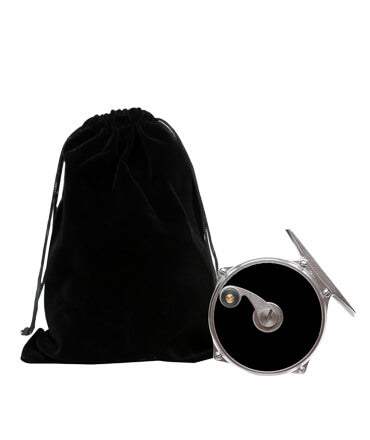Best Running Line Brands for Fly Fishing: A Guide for Beginners and Distance Casting Techniques
As an avid fly fisherman, I know the importance of selecting the right running line to enhance my experience on the water. The best running line brands offer a balance of smooth casting, durability, and sensitivity, which are crucial for distance casting and effective presentation. Whether you're a beginner or looking to refine your skills, understanding the options available can significantly impact your success.

When I started fly fishing, I quickly learned that a quality running line can make all the difference, especially when it comes to distance casting. Optimal line material and construction not only improve casting distance but also aid in managing the line as you reel in your catch. For those new to the sport, exploring various brands can uncover the right fit for your fishing style and preferences.
Familiarizing yourself with various running line options is essential for mastering fly fishing techniques. With proper guidance, I can share insights on the top brands that cater to both beginners and experienced anglers. From enhanced casting performance to increased accuracy, knowing which running line to choose can elevate your fishing adventures.
Fundamentals of Fly Fishing Gear
Understanding the basics of fly fishing gear is crucial for both beginners and experienced anglers. The right equipment significantly enhances casting accuracy, line control, and overall fishing success.
Fly Rod Essentials
A fly rod is integral to any fly fishing setup. The appropriate rod length and weight affect casting distance and line control. Common lengths range from 7 to 10 feet, while line weights typically vary from 2 to 12, depending on the intended species.
I focus on medium-fast to fast action rods for better responsiveness. These rods provide accuracy and help in casting delicate presentations. Additionally, the rod material—usually graphite or fiberglass—affects sensitivity and durability.
When assembling your rod, pairing it with a corresponding line weight is crucial. For example, a 5-weight rod works best with a 5-weight line, supporting effective leader and tippet connections.
Choosing the Right Fly Reel
Selecting the right fly reel complements the rod and line. My preference leans toward reels with a smooth drag system, essential for managing the fight of strong fish.
Reels typically range in sizes to match various line weights. A well-matched reel should balance the rod and provide adequate backing capacity. I prefer having at least 100 yards of backing for larger species.
Material matters, too; aluminum is durable and lightweight, whereas plastic is typically less expensive but may lack longevity. Also, consider whether a single-action or multi-action reel suits your fishing style.
Understanding Fly Line Varieties
Fly lines come in multiple types and configurations—each designed for specific conditions. The three main categories are floating, sinking, and intermediate lines.
Floating lines are best for dry fly presentations. They sit on the water's surface, making them ideal for surface-feeding fish.
Sinking lines are designed for reaching deeper waters quickly. I use sinking lines when targeting fish that dwell below the surface.
Intermediate lines fall between floating and sinking, useful for adjusting depth without fast sinking rates.
Each fly line features various tapers, affecting how it casts. For instance, a weight-forward taper facilitates easier distance casting, while a double taper offers versatility in presentation. Line weight corresponds to rod weight to ensure seamless coupling throughout the fly-fishing experience.
Optimizing Fly Line for Performance
To maximize the effectiveness of fly fishing, it's essential to understand how different elements of fly line contribute to performance. Key aspects include tapers, techniques for distance casting, and the nuances of casting dynamics.
Fly Line Tapers and Their Functions
Taper design plays a crucial role in how a fly line performs. The two primary types are double taper (DT) and weight forward lines.
- Double Taper (DT): Best for delicate presentations, this taper has a uniform weight distribution that allows for smooth roll casts and better control.
- Weight Forward (WF): This design concentrates weight at the front, which aids in longer casts and better line control, especially with heavier flies.
By choosing the right taper for specific conditions, I can enhance my presentations across various waters. Understanding how each taper affects my casting stroke and load on the rod is vital for consistent performance.
Maximizing Distance Casting Techniques
For distance casting, I focus on my casting stroke’s mechanics and line management. Key techniques include:
- Proper Backcasting: A strong, smooth backcast provides the necessary energy transfer for a long forward cast.
- Use of the Running Line: Keeping the running line straight and taut during the cast ensures more accuracy and distance.
- Line Speed: Increasing line speed helps minimize drag and allows for greater distances.
Practicing these techniques, especially with varying fly sizes, enhances casting performance while using the fly line effectively to achieve my desired distance.
The Art of Mending and Casting Dynamics
Mending is a critical technique that influences how the fly behaves in the water. Understanding when and how to mend can significantly impact my effectiveness.
- Timing: Mending should be timed to coincide with my casting movement, allowing for optimal line placement.
- Control: A well-timed mend helps adjust the line's position and minimize drag, allowing the fly to drift naturally.
Incorporating these dynamic movements into my casting routine, such as the roll cast or utilizing spey casting techniques, strengthens my skills and improves my overall fishing success.
Top Running Line Brands for Every Angler

In the world of fly fishing, choosing the right running line can significantly impact performance. I’ll explore some of the leading brands known for their innovative designs, durability, and specialized features. Here are my top picks that cater to various angler needs.
Scientific Anglers' Mastery Series
Scientific Anglers provides a reliable line for serious anglers. Their Mastery Series offers a range of options that excel in presentation and taper design. With lines like the AST Plus, I appreciate the enhanced shooting capabilities and reduced friction.
The construction of these lines is typically robust, ensuring long-lasting durability. They hold up well against abrasive conditions, making them suitable for different environments. For beginners and seasoned professionals alike, Scientific Anglers delivers precision and ease of use.
Rio's Specialty Lines for Precision
Rio is synonymous with quality fly lines, and their specialty lines stand out for precision casting. Their offerings, including the Rio Gold and Rio Outbound Short, are engineered for distance and accuracy. I find these lines to be excellent for targeting specific fish in various conditions.
The slick coating allows for minimal tangling and maximum shootability. Additionally, Rio lines maintain a great balance between stiffness and flexibility. This makes them versatile enough to meet the evolving needs of anglers.
Exploring Airflo and Cortland's Offerings
Airflo and Cortland are two brands that complement my fly fishing gear. Airflo’s lines often incorporate silk materials, providing unique benefits in terms of presentation. I find that their designs enable a more natural drift in the water.
On the other hand, Cortland focuses on functionality with durable lines that resist wear and tear. Their offerings feature various tapers, ensuring that anglers at all skill levels can choose a line that fits their casting style. Both brands maintain quality while catering to enthusiasts who appreciate detailed craftsmanship.
Starting Fly Fishing: A Guide for Beginners

Embarking on a fly fishing journey involves learning essential techniques, selecting the right equipment, and understanding fly patterns. This guide will focus on crucial aspects that will set a solid foundation for any beginner.
Basic Techniques for Starters
To start fly fishing, mastering basic casting techniques is vital. I recommend practicing the roll cast and spey cast. These methods are efficient for tight spaces, allowing smooth line presentation. The roll cast is particularly useful when you're close to the water's edge.
The ability to develop a consistent rhythm is key. I focus on a smooth, controlled motion to achieve longer distances. It helps to practice with different types of fly lines, such as WF3F, WF4F, or WF5F, depending on your needs. Adapting your casting to various fishing situations improves your overall experience.
Selecting Your First Fly Fishing Line
Choosing the right fly line is crucial for beginner success. Familiarizing yourself with the AFFTA line weight standards is a good starting point. I suggest selecting a floating line for beginners, as it is easier to control and works well with various fly patterns.
The SA MPX line is a good choice for its versatility. It handles well in different conditions, allowing for smooth casting. For trout fishing, I typically use a WF4F line, which provides great performance across various water types. It's essential to match the line weight with your rod for optimal results.
Common Fly Patterns: Dry Flies and Nymphs
When it comes to fly patterns, I often start with dry flies and nymphs. Dry flies float on the water's surface and imitate insects. Popular choices include the Royal Wulff, known for its visibility and effectiveness.
Nymphs, on the other hand, mimic aquatic larvae and are fished underwater. Their size can vary, so I keep a range of patterns in my tackle box. When targeting trout, I ensure to have both styles represented. Experimenting with different patterns helps discover what works best in my fishing location.











